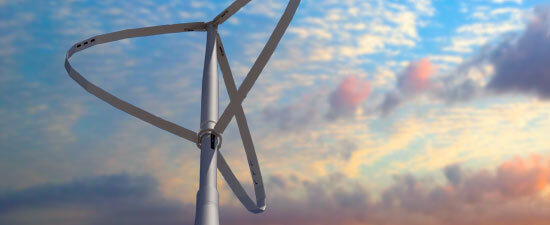News Release from windfair.net
Wind Industry Profile of
One Man's Curse Is Another Man's Blessing
Roll Backwards in the House of Representatives
In December 2015, the U.S. Congress reached a bi-partisan agreement to phase out the PTC providing tax incentives for the construction of wind turbines, over a five-year period. The political security brought about by this long-term agreement then triggered a boom in the wind industry in the U.S. Billions of dollars in investments and the creation of tens of thousands of American jobs were the result. The wind sector is now one of the fastest growing industrial sectors in the US in terms of jobs.
But in early November the House of Representatives made a backward roll. The proposed tax reform bill foresees deep cuts in existing agreements as well as new, retroactive regulations that will ensure that many wind projects in the U.S. lose their tax advantages.
The American Wind Energy Association (AWEA) has been fighting against the draft ever since. Tom Kiernan, CEO of AWEA, criticized: "The House tax bill, far from being pro-business, would kill over half of new wind farms planned in the U.S. and undermine one of the country’s fastest growing jobs.” Mike Garland of Pattern Energy, one of the largest wind energy developers in the US, called the design a "cruel and unusual punishment".
Large Wind vs. Small Wind
But there are also other voices, because, as we know, one man's curse is another man's blessing. One manufacturer of small wind turbines in particular sees this as an opportunity to advance small wind energy in the U.S. in the future. The PPA agreements between large companies and energy suppliers, which are popular here in particular, should serve as a model. Not every company is in need for the power of an entire wind farm like Facebook. For smaller companies, there is the option of installing a small wind turbine instead. And that is where CGE Energy's business model begins.
Equipped with a vertical axis, the WIND-e20® wind turbine was specially designed by the Michigan-based company for on-site power generation and can generate up to 65 kW of energy at an ideal location. This means that individual commercial buildings, small companies, schools or municipal facilities can be supplied cost-effectively with self-generated electricity. In addition to its low height and modular design, the low noise level as well as its bird and bat-friendly design are further advantages over a large wind turbine.

The WIND-e20® wind turbine from CGE Energy (Image: CGE Energy)
The advantages of the turbine itself are obvious. And the House of Representatives' proposal is just the right one at the right time. While tax advantages of large wind farms are to be massively curtailed, the proposed scheme would reintroduce tax credits for small wind projects.
It is envisaged that the tax credit would be 30% until 2019, that it will be reduced to 10% in 2022 and that it will be phased out gradually in 2027. CGE's business model does not rely on tax credits, but the company's management hopes that this will have a greater impact on its ‚Sustain‘ program for energy efficiency and renewable energies.
Business Model Similar to PPAs
The idea behind Sustain is similar to PPAs. Within a so-called 'Energy Performance Contract', the owner pays for the improvements in energy efficiency through energy savings without incurring pre-operating costs. This means, among other things, that the small wind turbine will be installed without incurring any costs for the operator beforehand.
The company has already signed some initial contracts: the CGE Energy team has carried out comprehensive energy audits at three public housing authorities (Public Housing Authorities, PHA) and 213 apartments throughout northern Michigan and has defined appropriate measures. Sustainable energy measures are to be implemented, such as the modernisation of LED lighting, sanitary installations, boilers, water heaters, natural gas-fired cogeneration, photovoltaics, improved energy management systems and infrastructure repairs at some locations. In addition, the sites were also evaluated for the future installation of the wind turbines.
Kim Johnson, Executive Director of the Mount Pleasant Housing Commission, is enthusiastic about the projects: “CGE Energy’s approach to these improvements and the educational elements they incorporate into their projects will make this endeavor something we can all be proud of,” said Johnson. “The savings that our agencies will realize cover the debt for the upgrades and also give profit back into our operating budgets.”
Since the U.S. Senate has now presented another bill that largely adheres to the old guidelines, the big run on small wind turbines in the United States is unlikely to happen. But they are definitely an alternative for climate protection.
- Author:
- Katrin Radtke
- Email:
- press@windfair.net
- Keywords:
- USA, tax bill, AWEA, CGE Energy, small wind, turbines, PTC
























